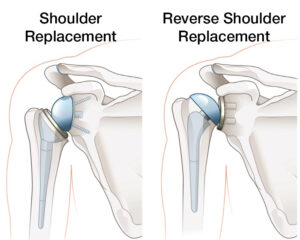Shoulder Surgery
The shoulder is complex and requires the attention of a specialist. At Glacial Ridge, you’ll receive care from Dr. Joshua Thomas, an orthopedic surgeon who completed a rigorous one-year shoulder fellowship at Johns Hopkins University. “Fellowship training gives you an extra scope of practice, and it makes you an expert in the field,” says Thomas, who has performed more than 400 shoulder surgeries. “If you’re going to get a shoulder replacement, you need a surgeon with advanced training.”
Weakness, stiffness, and pain in your shoulder joint are not normal. The symptoms only worsen over time, so if you’re battling a shoulder condition, make an appointment with Dr. Thomas.

 Shoulder Replacement
Shoulder Replacement